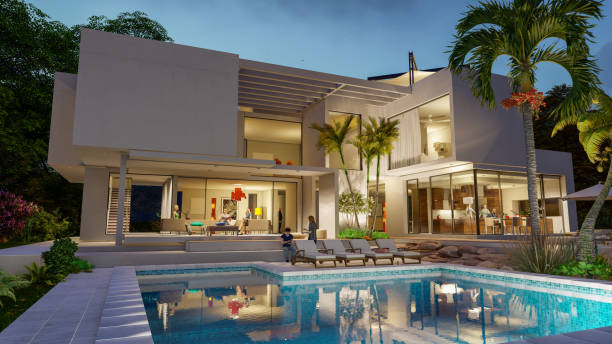In recent years, the terms “green” and “sustainable” have become more commonly associated with commercial buildings. Interest in creating more environmentally friendly buildings is growing, whether in the form of a “green project,” “green initiatives,” “sustainable building construction,” or something else. Green and sustainable are frequently used interchangeably, but the terms have slightly different meanings.

The difference between green and sustainable building construction
Sustainability is a broad concept that refers to a building’s overall ability to provide a comfortable, healthy, and productive environment over time without negatively impacting the environment. Sustainable building considers all three pillars of sustainability: planet, people, and profit. How can a structure be designed and used for the future of our people?
This ideology must be “baked” in at every stage of a building’s life cycle in order for it to be truly sustainable. As an example:
Planning: Are you constructing on previously undeveloped land?
Design: Sustainable architecture considers window placement for optimal natural ventilation, for example.
Construction: Are the materials used safely for the environment and the people who live in them? Is the construction process environmentally friendly?
Are energy and water being used efficiently during operation and maintenance? Are cleaning products safe to use around people?
Will solid waste and disposed materials be handled in an environmentally safe manner during demolition?
Green Construction
Green, on the other hand, is an entirely environmental concept that refers to the individual practices and processes that comprise the incremental steps toward environmental sustainability. In order to become more sustainable, “green initiatives” such as switching to renewable energy sources or reducing your carbon footprint may be implemented. Both LEED and WELL certifications are green building standards that outline the steps that buildings can take to become more environmentally friendly.
Most structures have been standing for decades and were constructed before green and sustainable architecture, design, and other similar aspects became a major concern. But that doesn’t mean facility managers and building owners can’t take steps to improve their buildings.
Most structures provide numerous opportunities to go green and take steps toward sustainability. To begin with:
Monitor CO2 levels, water demand in your building, and switch to LED lighting to reduce energy waste.
Regular air quality monitoring can help you improve the health of your building.
Reduce the environmental impact of your energy system by incorporating solar and other renewable energy technologies.
